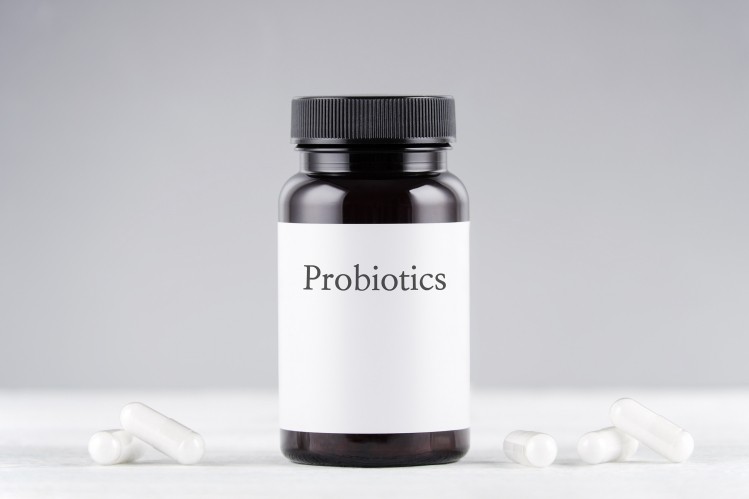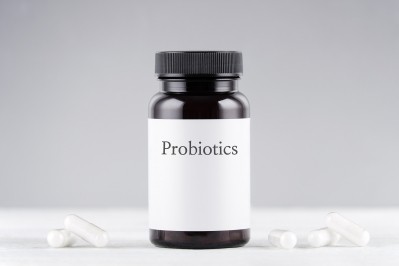‘The winds are changing’: Flow cytometry proponents talk up probiotic enumeration technology

Probiotic products on shelves must label probiotics in milligrams. This is a regulatory standard, but it is a meaningless measure when it comes to informing a consumer about whether the bacterial strain is alive or dead. The International Probiotics Association petitioned the US Food and Drug Administration in 2016 to allow for the voluntary use of CFUs on a label. FDA issued a draft guidance in 2018 allowing for declarations of probiotics in CFUs, in addition to milligrams.
CFUs, or colony forming units, are measured using a plate count technique: This “gold standard” technique involves adding bacterial cells to an appropriate medium (different types of agars), culturing under specific conditions, and then optically counting the probiotic’s ability to generate a colony of cells.
The technique is not without its limitations. “Plate counts can take two to three, or even five days,” explained Andrzej Benkowski, Senior Technical Leader at Eurofins Microbiology Laboratories, Inc. in Madison, Wisconsin. “And because there’s a lot of manual manipulation for plate counts you can see quite a bit of variability, especially inter-lab variation.
“A contract manufacturer may then add more of the probiotic to the formulation to cover those variations, so there are overages.”
This has led some to explore alternative methods to enumerate cells. Genetic techniques such as whole genome sequencing or 16S rRNA sequencing have mostly been applied for identification, although notable advances have been made applying PCR techniques for enumeration, called quantitative PCR (qPCR).
Flow cytometry
Momentum appears to be building for a technique called Flow Cytometry ever since the publication in 2015 of ISO 19344, an international standard for the quantification of lactic acid bacteria by flow cytometry in fermented products, starter cultures and probiotics used in dairy products.
The US Pharmacopeia dedicated almost an entire day of its recent event, “Emerging Technologies in probiotic, live biotherapeutic product and microbiome analysis” on flow cytometry (October 6-7. 2022).
Flow cytometry itself has been around for decades: it is used for blood analysis and detection of certain cancers, for example. It is a culture-independent technique that works by adding a fluorescent stain(s) called fluorophores to a solution of cells and passing these through a tiny funnel which sorts them into single file. A laser is used as the light source and the fluorophores allow the detector to differentiate between live, dead and/or damaged cells.
Two measures are obtained at the end, the TFUs or total fluorescent units (all the cells, regardless of their state), and the AFUs or active fluorescent units (all the viable (alive) cells).
Leading brands like Seed are already labelling their probiotics in AFUs. Dozens of other products in many markets around the world label their products in AFUs, said Marco Pane, R&D Manager for Italy-based Probiotical and a leading proponent of the technique.
“Flow cytometry is not mandatory in the regulations,” said Pane, “but by labeling in AFUs you become more competent from an information point of view.”
George Paraskevakos, IPA’s executive director, noted that in its first drafts, his association included the flow cytometry methodology in its 2016 citizens petition for CFU’s, “but decided to not confuse matters of what we were trying to achieve at the time, which was to get CFU’s instead of mg on the supplement facts panel on the finished product labels for probiotics.
“This being said, we did add wording to leave the door open for new standards being developed and if needed may reopen the conversation for enumeration via FC one day. We will see how this evolves.”
Colonies vs active cells
The consideration for postbiotics
“In gram positive bacteria like lactobacillus, over 95% of the dry weight is cell wall, and that’s where you find the molecules that are evolutionarily programmed to talk to the host,” explained Probiotical’s Marco Pane.
“So, if you have a plate count, a CFU, of 10 billion, to achieve that number, you probably have a lot more cells (alive and dead) than that, and all of those cell wall molecules are being sensed by the immune system. You have to know everything that’s in there, and total number of cells. Flow cytometry provides that number.”
“Flow cytometry is a structural analysis, and gives you more of a direct picture,” said Pane. In other words, it counts cells – and by using the appropriate stains, the technique can very quickly (tens of thousands of cells per minute) tell you if they are alive or dead and/or damaged. “It doesn’t necessarily answer the question of what is in my product, only what grows on a plate.”
On consideration of the traditional plating technique is it is basically counting a sub-group of the cells that are able to form a colony, he added.
And for this reason, there is not a direct correlation between CFUs and AFUs. It can be close to 1:1 in a fresh product, but this correlation does not extend over the course of shelf-life.
“Flow cytometry is real time data,” added Eurofins’ Benkowski. “You can go from sample preparation to data analysis in an hour.”
This real-time data is a huge advantage, according to Martin Wilkinson from the University of Limerick. “For the guys at the factory levels, the producers of these cultures, there’s a huge advantage because it provides real-time data on the functionality of the cultures,” he told us. Wilkinson is the author the 2018 review, “Flow cytometry as a potential method of measuring bacterial viability in probiotic products: A review”, which was commissioned by the International Probiotics Association.
Wilkinson also noted that for plate counts the lab footprint is huge: multiple plates, different media, whereas flow cytometers are benchtop machines that are getting smaller and smaller every year.
“Even from an environmental perspective, flow cytometry makes sense,” he said.
The scientific literature…
However, one huge factor in favor of CFUs is that the vast majority of clinical studies describe probiotic doses in terms of CFUs. This will change as more researchers report data in AFUs instead of, or in addition to CFUs, but that body of science needs to grow.
“At Probiotical, we measure probiotics with plate counts (CFUs) and flow cytometry (AFUs),” said Pane. “We prefer flow cytometry, but it’s important to provide both numbers.
“Overall, it is just a matter of time. I urge companies and academics to also use flow cytometry and provide AFUs. The winds are changing,” he added.
Dr Wilkinson concurred: “It’s a shift in mindset. Stop tying yourself to CFUs.”
Remaining obstacles
One common criticism of flow cytometry is that it cannot deal with multi-strain formulations, nor with encapsulated products, but both of these are being addressed and real progress is being made, according to the experts we spoke to.
For example, Ireland-based Anabio has developed a method to use flow cytometry for the enumeration of micro-encapsulated probiotics, which has subsequently been validated by Eurofins.
“Flow cytometry uses modern technology to provide a fast, accurate, reliable, ISO-accredited method to enumerate encapsulated probiotics,” Dr Aidan Fitzsimons, CEO of Anabio, told us. “It enables clients, 3rd party laboratories and regulatory bodies to easily and accurately enumerate encapsulated probiotics in a wide range of applications and is therefore fundamental to enabling AnaBio deliver the health benefits of encapsulated probiotics to the widest possible audience.”
Solutions to the issue of multi-strain formulations are also available, albeit perhaps not cost-effective currently. BioAster in France, for example, has developed and validated flow cytometry methods to be able to assess bacterial load in fecal material, to establish the proportions of gram positive versus gram negative bacteria, and to monitor specific species of interest using polyclonal antibodies.
Guiding the conversation
Probiotical’s Pane, Limerick’s Wilkinson, Eurofin’s Benkowski, and Anabio’s Fitzsimons are all proponents of flow cytometry, but what is the overall position of the industry?
“With our experts regarding analytical standards, IPA’s position on flow cytometry or any other methodology for that matter is that we always have our ear to the ground for new developments and try to be involved in any discussions for new methods,” IPA’s Paraskevakos told us.
“As the voice of our industry, it is important we understand and try to guide the conversation within this realm. The end goal is to maintain simplicity and understanding for both regulators and consumers when reporting the viable probiotic ingredients within finished products.”
















